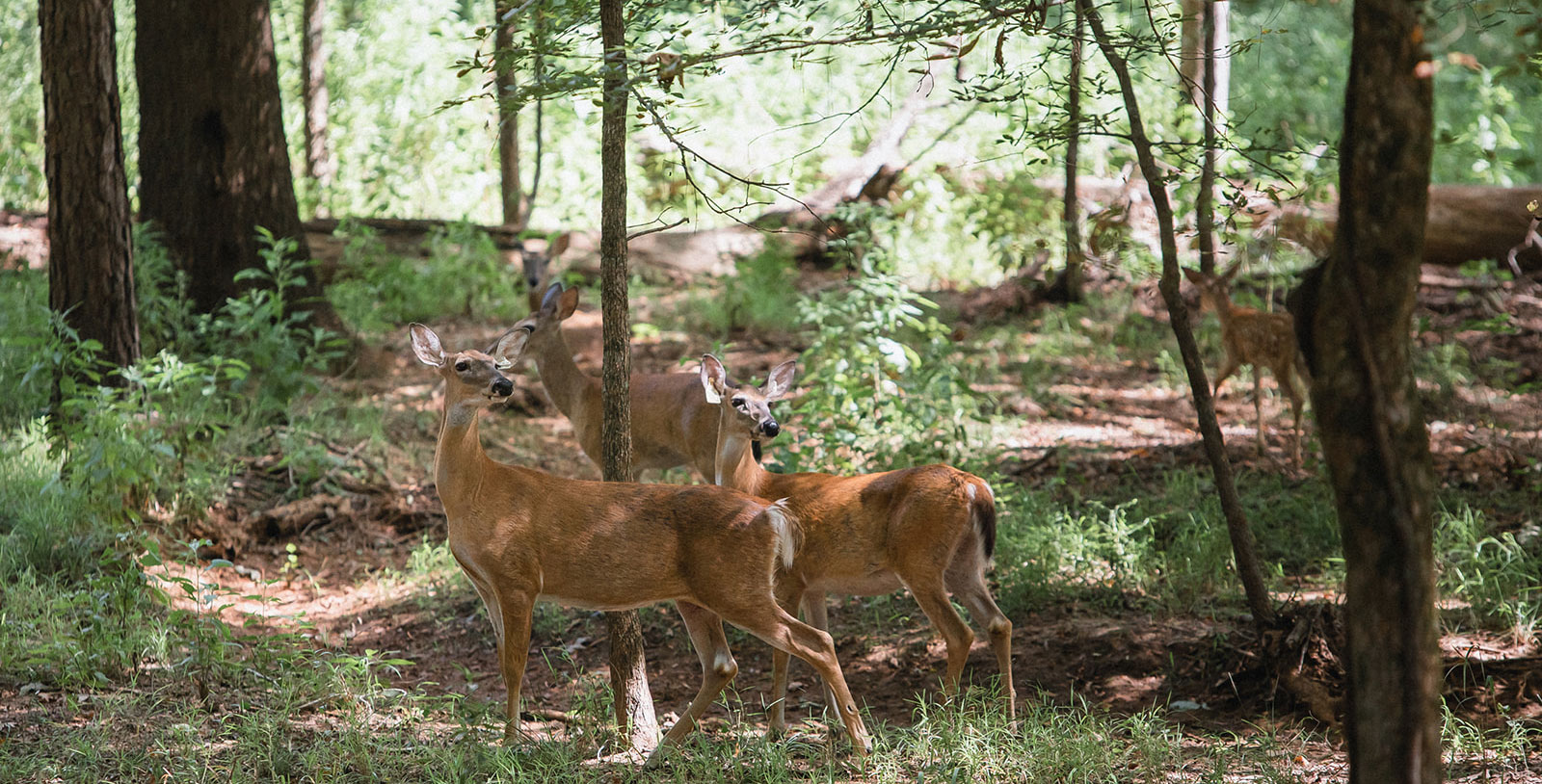Deer are creatures of habit: once they have found tasty food sources and a protected and safe bedding area, they will stay there for their whole life, barely moving beyond their home area.
To facilitate your deer population and make it easier for them to linger on your land, you can provide deer corridors that connect deer food sources to their bedding areas. Think of a corridor as a highway that links your home to the rest of your activities.
There is, however, a significant difference between a highway and a deer corridor: deer like protected and dense vegetation that hides them from any intruders, including humans. For your deer to feel safe enough to use the corridors, these should be surrounded by greenery and other vegetation that acts as a shield for deer.
Deer usually create their own corridors. If, however, your land is already providing deer with all the food, water, and shelter they need but you have yet to see any deer, perhaps you should consider developing deer corridors.
What Are Deer Corridors?
Deer corridors are narrow strips of land that criss-cross your land and connect a deer’s food source to its bedding area. The food source can be a tree orchard or a man-made food plot. Deer corridors also connect water holes with bedding areas and food sources. Deer travel along these corridors several times a day and use them to connect their favorite spots on your land.
How Do I Create Deer Corridors?
If the deer haven’t yet created any corridors on their own, perhaps you should take the initiative and build them for your deer population.
Map Your Land
The first thing to do is to map your land: note down the food sources where you know deer linger around. Oak trees, fruit trees, food plots, and low vegetation like berries and mushrooms are all deer-preferred food sources. These can also be agricultural crops and other crops that may have been planted on your land.
Then, write down any deer bedding areas that you may have observed. Bucks and does usually have different bedding areas. Start by observing your land, looking for depressions in the vegetation. These are signs that deer have been sleeping there, with larger depressions being signs of groups of does sleeping together. The thickest parts of your land are usually where deer will choose to sleep. Swamps, vines, brambles, and dense bushy locations are favorite deer bedding areas.
Finally, mark all the areas where deer can find water. These can either be natural or man-made.
Find Land Depressions
The next step is to take a look at a topographical map of your land and follow with your finger any creeks, natural basins and pockets, as well as ditches and other natural corridors provided by the landscape of the land and the vegetation itself.
Deer like to stay hidden from predators, so you need to find depressions and areas that would provide deer with the shelter they need. Once you have determined how deer would like to move within your land, start clearing these strips.
How Narrow Should I Make the Corridors?
To answer that question, picture a bike going down these corridors. That’s the width you are looking for. Make sure your corridor is surrounded by dense vegetation.
What If My Land Is Flat?
If your land is flat and doesn’t provide any cover for your deer corridors, you need to plant vegetation and wait for it to grow. Deer don’t like to be exposed, so you definitely need bushes, low trees, and undergrowth to give deer the natural cover they need to feel safe.
Consult a tree specialist to plant vegetation that grows fast and is deer-friendly. Take into consideration your area’s hardiness zone. Don’t mow or spray your newly planted plot. If you want to speed up the process, add fertilizer to help your plants and bushes grow faster.
When Should I Develop Deer Corridors?
The best time to design your deer corridors is in late summer. You have a better view of the land and bucks haven’t entered the rut season yet.
What Sort of Vegetation Should I Consider for My Deer Corridors?
You are looking for dense vegetation, such as high grasses, vines, and berry bushes. Low trees such as crabapples, myrtle, quinces, and dogwood are also good choices.
Wildtree Has the Right Trees for Your Deer Orchard
Whether you are planning a food plot, a wildlife orchard, or a deer corridor, we have the right plants for your land. Visit the Wildtree online shop, call now 832-400-5978, or email us at [email protected] and get 40% off when you pick up your order. Benefit from free shipping on all orders and a 10% discount on orders over $1,000!


